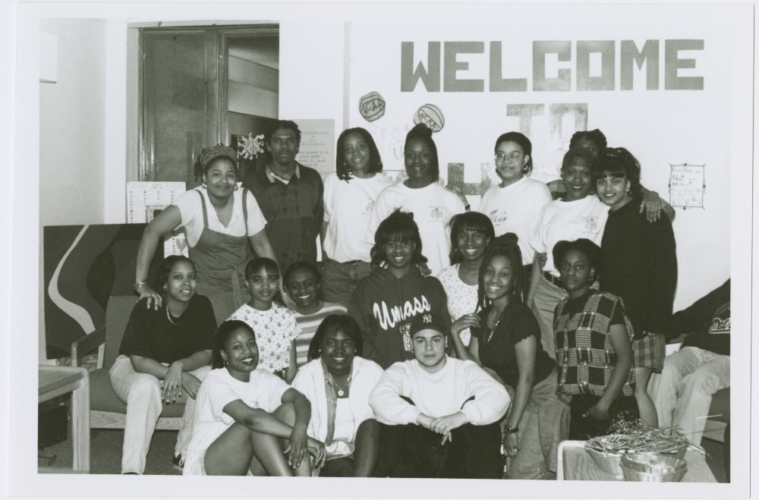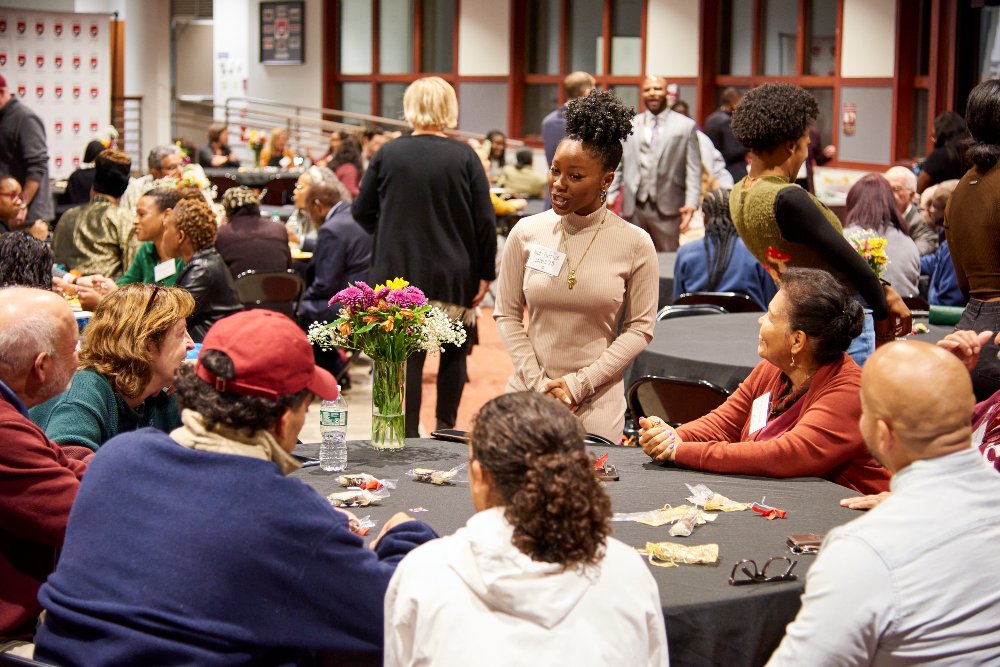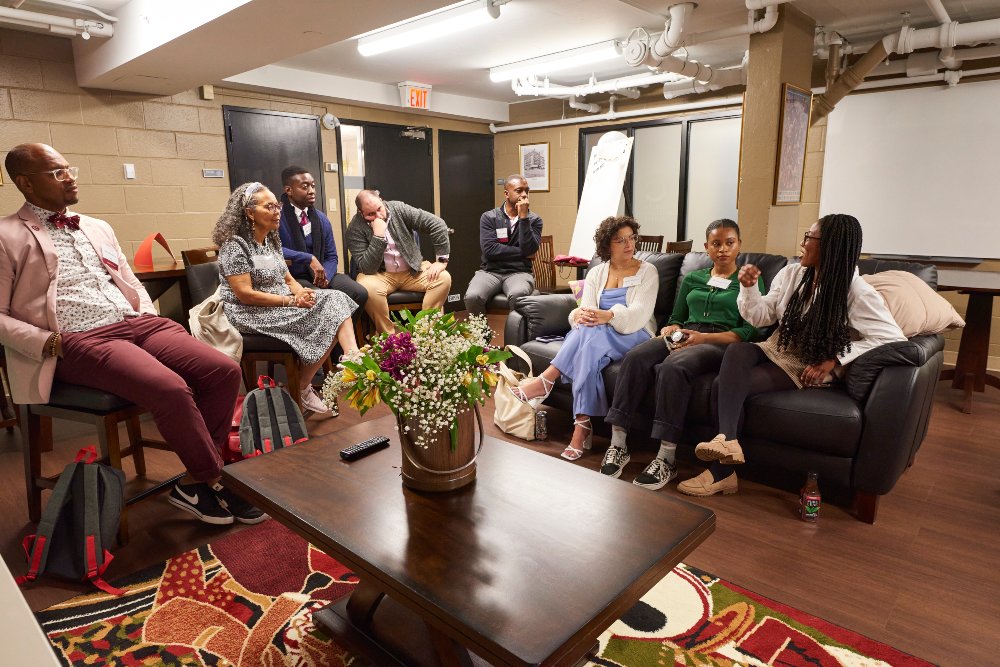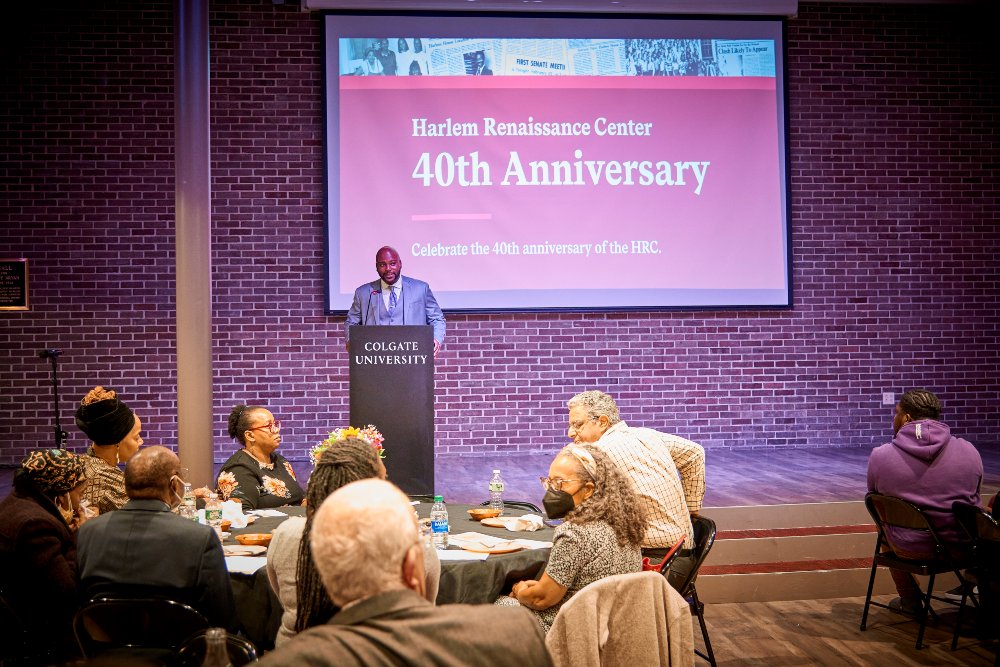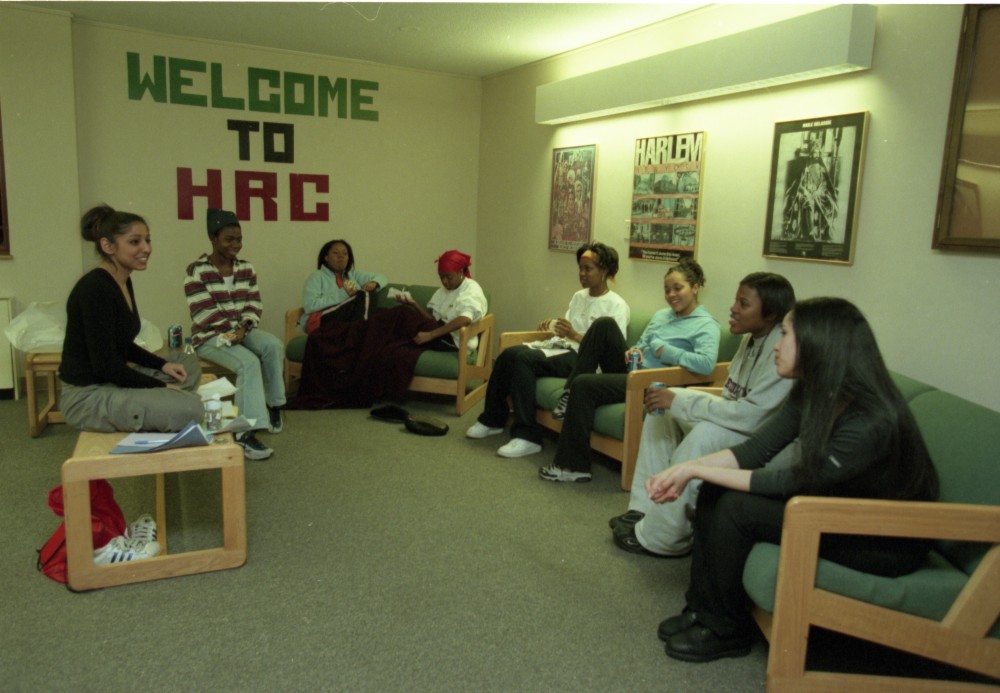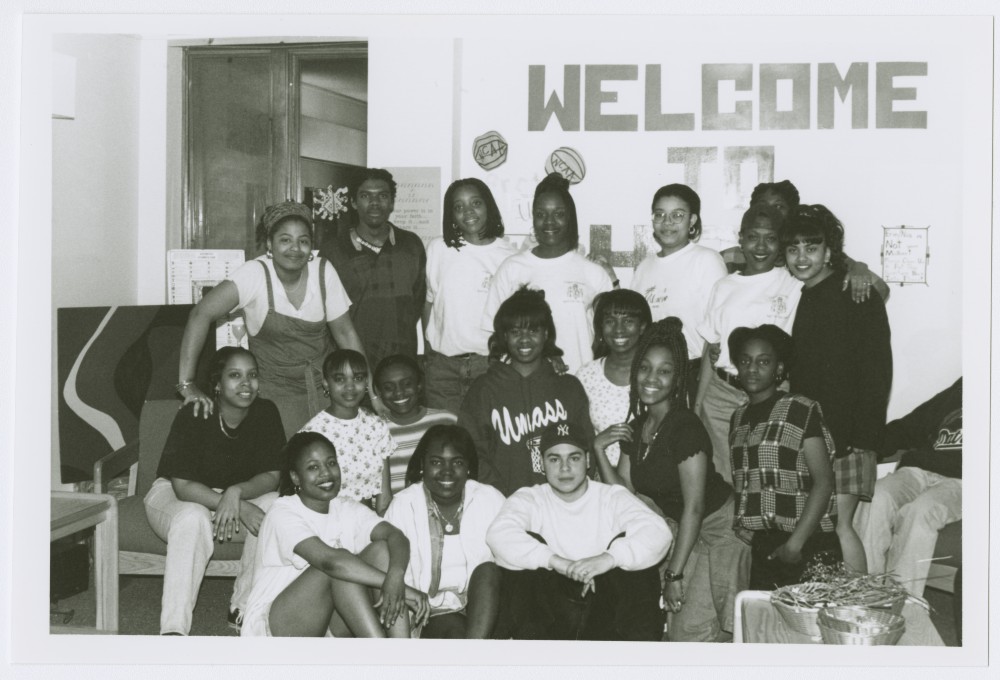For more than 40 years, the Harlem Renaissance Center (HRC) has been a vital source of inclusivity, learning, and growth on campus. Founded in November 1989 by Erick Bowen ’84 and Kenneth Frazier ’85, the HRC was born from the desire for a space where students of color, specifically Black students, could feel at home on Colgate’s predominately white campus.
“Your dining table and where you lay your head are very intimate spaces,” Bowen says. “Our hope was to create a space for ourselves and for people like us at Colgate, where we could feel safe, grow our confidence, and be unapologetically Black in the way that we interacted with one another. The HRC became the home we had been looking for.”
Initially, just 20 Black and 15 white students expressed interest in living in the HRC, but interest in the center grew. Today, nearly 50 students live in the residence hall.
In its first few years on campus, the center sparked debate regarding its purpose. While the HRC’s intended goals were to increase awareness of Black culture and interactions between the Black community and the rest of campus, HRC and Maroon-News records from the time state that some members of the Colgate community feared the center would become a separatist organization. However, those fears soon proved to be unfounded, as rather than serving to segregate Black students from their white peers, the HRC became the only residence hall on Colgate’s campus to have a roughly even ratio of Black and white students.
In the decades that followed, the HRC has not only been instrumental to the experiences of countless students but also the culture of Colgate as a whole. “From its inception, the Harlem Renaissance Center has played a key role in promoting self-discovery, learning, and leadership in its residents and creating a rich, intellectual, and social atmosphere where students can find comfort,” says Rahneke Worrell ’25. “For me and other HRC residents, the center continues to be instrumental to both our Colgate experience and personal development.”
While the HRC now primarily functions as a living-learning community, the space had various purposes throughout the years, serving as a meeting place for clubs like the Black Student Union, housing for an African diaspora–focused Sophomore Residential Seminar, and even transforming into a museum of African American history at one point. Currently, members also plan activities for other groups on campus and facilitate discussions with other dormitories on the topics of race, politics, and social activism.
Last fall, during homecoming weekend, the Colgate community came together to celebrate the 40th anniversary of the HRC. This celebration included a range of activities, including panel discussions, workshops, tours of the center, a film screening, and an anniversary dinner featuring speeches from students and alumni.
Dean of Students Dorsey Spencer delivered the celebration’s closing remarks, sharing his hopes for the future of the HRC. “In the years to come, the HRC will be what the students want it to be and what they need it to be,” began Spencer. “Alongside students, we will continue to develop the HRC as a nexus of learning, cocurricular social engagement, cultural celebration, mentoring, and leadership development. We will create new initiatives and forge new opportunities for alumni and student interactions. And most of all, we will ensure that the HRC thrives.”

